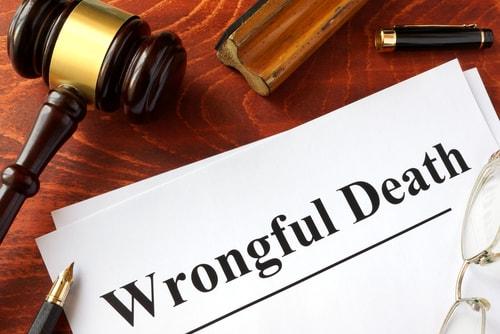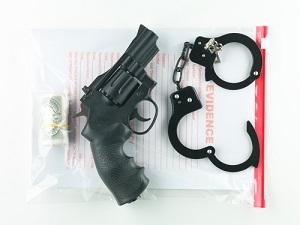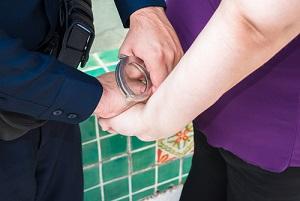Recent Blog Posts
What Are the Requirements for Filing an Illinois Wrongful Death Claim?
 Accidents of any type can result in serious injuries, but in some cases, they can also cause the wrongful death of the victim. The loss of a beloved relative can traumatize a family for years. It can be difficult to accept his or her untimely demise at the hands of another person. This can be especially true if the incident was preventable and was caused by a negligent party’s wrongdoing.
Accidents of any type can result in serious injuries, but in some cases, they can also cause the wrongful death of the victim. The loss of a beloved relative can traumatize a family for years. It can be difficult to accept his or her untimely demise at the hands of another person. This can be especially true if the incident was preventable and was caused by a negligent party’s wrongdoing.
In certain situations, such as a homicide, the death may have been caused intentionally. Regardless of whether the death was the result of a motor vehicle accident or medical malpractice, the deceased person’s surviving spouse and next of kin may be entitled to monetary compensation. In some cases, this may be particularly important if the victim was the sole provider of the family’s income. It is important to know what constitutes wrongful death and how to seek damages for this type of tragedy.
Understanding School Zone Speed Limits in Illinois
 In today’s society, everyone is busy, going from place to place in a hurry. However, speeding in Illinois is a serious criminal offense. Studies show that traveling at a high rate of speed can cause severe and even fatal car accidents. Speed limits are put in place to protect drivers and pedestrians. In school zones, the speed is reduced even more than on other roadways due the presence of young children. According to the Transportation Research Board, approximately 25,000 children are injured and 100 are killed in school zone accidents each year. It is important for any Illinois driver to know the speed limits when traveling in school zones to avoid a serious traffic violation.
In today’s society, everyone is busy, going from place to place in a hurry. However, speeding in Illinois is a serious criminal offense. Studies show that traveling at a high rate of speed can cause severe and even fatal car accidents. Speed limits are put in place to protect drivers and pedestrians. In school zones, the speed is reduced even more than on other roadways due the presence of young children. According to the Transportation Research Board, approximately 25,000 children are injured and 100 are killed in school zone accidents each year. It is important for any Illinois driver to know the speed limits when traveling in school zones to avoid a serious traffic violation.
Illinois Traffic Laws for School Zones
Under Illinois law, school zone speed limits are set at 20 miles per hour on school days when children are present. It is enforced only when children are likely to be on the street or outside the school building within the designated school zone parameters. However, the 20 mph speed limit is not in effect when children are inside the school building during normal class time.
Who Is Eligible for a Monitoring Device Driving Permit in Illinois?
 Driving under the influence (DUI) of drugs or alcohol is illegal in all 50 states. There is also no denying that drunk driving endangers not only the driver but other motorists on the road as well. According to the National Highway Traffic Safety Administration (NHTSA), an average of one alcohol-impaired driving fatality occurs every 51 minutes in the United States.
Driving under the influence (DUI) of drugs or alcohol is illegal in all 50 states. There is also no denying that drunk driving endangers not only the driver but other motorists on the road as well. According to the National Highway Traffic Safety Administration (NHTSA), an average of one alcohol-impaired driving fatality occurs every 51 minutes in the United States.
A DUI charge carries severe consequences in Illinois. Some of the penalties can include fines, mandatory alcohol education classes, loss of driving privileges, or even jail time. Depending on the circumstances, however, a driver may be eligible for a monitoring device driving permit (MDDP).
What Are the Qualifications for MDDP?
In Illinois, a statutory summary suspension provides for the automatic suspension of driving
privileges for a driver who fails, refuses to submit to, or does not complete chemical testing for blood alcohol content (BAC) after being arrested on suspicion of DUI. During the suspension, a first-time DUI offender may be granted an MDDP from the Secretary of State’s office, which allows unlimited driving throughout the period.
Is There a Difference Between Assault and Battery in Illinois?
 The terms “assault” and “battery” often go hand in hand, which may cause someone to think it is one crime. However, they are separate offenses according to Illinois criminal law. Under the Illinois Criminal Code, criminal charges are divided into two groups: offenses against property, and offenses against a person. Crimes against property can be in the form of robbery, burglary, theft, and arson. Crimes against individuals can include kidnapping, sexual abuse/assault, homicide, and “bodily harm.” Assault and battery fall under bodily harm, and the penalties can differ depending on the circumstances of the case.
The terms “assault” and “battery” often go hand in hand, which may cause someone to think it is one crime. However, they are separate offenses according to Illinois criminal law. Under the Illinois Criminal Code, criminal charges are divided into two groups: offenses against property, and offenses against a person. Crimes against property can be in the form of robbery, burglary, theft, and arson. Crimes against individuals can include kidnapping, sexual abuse/assault, homicide, and “bodily harm.” Assault and battery fall under bodily harm, and the penalties can differ depending on the circumstances of the case.
Two Distinct Crimes
Illinois law states that an assault occurs when an individual “engages in intentional conduct which places another in reasonable apprehension of receiving a battery.” That includes a verbal or implied threat (menacing hand gestures or body language) of battery that causes an individual to feel afraid of impending violence. Approaching someone with raised or clenched fists is likely to be considered assault.
Can First Responders Claim Workers’ Compensation in Illinois?
 Law enforcement and firefighting professionals face danger on a regular basis. Their jobs are to protect and save citizens, even if that means putting themselves in peril. This means injuries can be prevalent for individuals in these occupations, especially due to the physical nature of their duties. In certain situations, workers’ compensation benefits can be claimed if one of these workers suffers an injury on the job. In Illinois, first responders can file for workers’ comp benefits, with exceptions for police and firefighters employed by the City of Chicago.
Law enforcement and firefighting professionals face danger on a regular basis. Their jobs are to protect and save citizens, even if that means putting themselves in peril. This means injuries can be prevalent for individuals in these occupations, especially due to the physical nature of their duties. In certain situations, workers’ compensation benefits can be claimed if one of these workers suffers an injury on the job. In Illinois, first responders can file for workers’ comp benefits, with exceptions for police and firefighters employed by the City of Chicago.
Common First Responder Injuries
Police officers have a greater chance of incurring a work-related injury or illness than those in many other occupations. Nonfatal injuries and illnesses that cause officers to miss work may be the result of violence, animal attacks, or even falls while on duty. For example, when serving search warrants, an officer could face a suspect who pulls a gun or a knife. A suspect could also be combative by hitting, kicking, or shooting at law enforcement. Other cause of injury may include vehicle collisions while patrolling the roadways. When making a traffic stop, an offender may try to evade or elude police, which sends the officer on a high-speed chase, which could result in a crash.
What Are the Penalties for Unlawful Use of a Weapon in Illinois?
 With limited exceptions, every United States citizen has the Second Amendment right to keep and bear arms. According to Illinois’ Concealed Carry Act, a person must obtain a permit in order to carry a gun in public. In addition, gun owners must have a Firearm Owner’s Identification Card (FOID).
With limited exceptions, every United States citizen has the Second Amendment right to keep and bear arms. According to Illinois’ Concealed Carry Act, a person must obtain a permit in order to carry a gun in public. In addition, gun owners must have a Firearm Owner’s Identification Card (FOID).
Unlawful of a Weapon (UUW) is a serious crime in Illinois. If a person is arrested for having a gun in public, and he or she does not have a Concealed Carry Permit, the charge is UUW. If an individual does not have a FOID Card or if the gun was loaded, he or she will be charged with an Aggravated UUW. Both charges could result in hefty fines and jail time if convicted. It is important for gun owners to understand what constitutes the unlawful use of a weapon.
Punishments for UUW Offenses
Illinois law provides the definitions, offenses, and penalties pertaining to UUW charges in the state. While many violations of this statute are classified as misdemeanors, an offender could face felony charges depending on the circumstances.
Plainfield Woman Falls Out of Carnival Ride
 For some people, enjoying a Ferris wheel, merry-go-round, roller-coaster, or other ride is the highlight of a trip to an amusement park or fair. For others, just the thought of riding one of these rides is enough to put knots in their stomach. While the vast majority of amusement park, carnival, and fair rides are completely safe, accidents do happen. Sometimes a ride glitches because it has not been properly maintained. Other times, a ride operator makes a mistake and causes a malfunction.
For some people, enjoying a Ferris wheel, merry-go-round, roller-coaster, or other ride is the highlight of a trip to an amusement park or fair. For others, just the thought of riding one of these rides is enough to put knots in their stomach. While the vast majority of amusement park, carnival, and fair rides are completely safe, accidents do happen. Sometimes a ride glitches because it has not been properly maintained. Other times, a ride operator makes a mistake and causes a malfunction.
Whatever the reason, ride accidents are usually horrifying for the individuals on the ride as well as spectators watching from the ground. When negligent design, manufacture, construction, or operation is the cause of a ride accident which causes injury or death, a personal injury lawsuit can help recover damages.
Broken Track Being Blamed for Roller-Coaster Breakdown
What Is a Moving Violation in Illinois?
 Every motorist is responsible for driving safely and following the rules of the road. Statistics show that almost all U.S. drivers have been or will be pulled over by law enforcement at least once in their lifetime for a traffic violation. The fact that these violations are fairly common should not mean they should be taken lightly. Any act that breaks the law is serious, and a moving violation has the potential to cause other drivers or pedestrians harm.
Every motorist is responsible for driving safely and following the rules of the road. Statistics show that almost all U.S. drivers have been or will be pulled over by law enforcement at least once in their lifetime for a traffic violation. The fact that these violations are fairly common should not mean they should be taken lightly. Any act that breaks the law is serious, and a moving violation has the potential to cause other drivers or pedestrians harm.
Moving Versus Non-Moving Violations
It is important for all drivers to understand the difference between a non-moving and a moving violation. A non-moving violation is just like it sounds; the offense committed was at a time when the vehicle was stopped or parked. If a car is in motion when the driver commits a traffic violation, that is considered a moving violation.
What Are the Penalties for Domestic Violence Charges in Illinois?
 Domestic violence of any kind is against the law in Illinois. There are many acts that constitute domestic abuse. According to the Illinois Domestic Violence Act, any individual who hits, kicks, chokes, harasses, threatens, or interferes with the personal liberty of another family or household member has broken the law. Abuse can take place regardless of race, geographic location, or income level, and for many different reasons. The abuser may suffer from certain mental health issues such as addiction or post-traumatic stress disorder. An act of domestic abuse can also be performed in self-defense or defense of another person, or as a result of mutual combat. No matter what leads to domestic violence, there will be legal repercussions.
Domestic violence of any kind is against the law in Illinois. There are many acts that constitute domestic abuse. According to the Illinois Domestic Violence Act, any individual who hits, kicks, chokes, harasses, threatens, or interferes with the personal liberty of another family or household member has broken the law. Abuse can take place regardless of race, geographic location, or income level, and for many different reasons. The abuser may suffer from certain mental health issues such as addiction or post-traumatic stress disorder. An act of domestic abuse can also be performed in self-defense or defense of another person, or as a result of mutual combat. No matter what leads to domestic violence, there will be legal repercussions.
Domestic Battery
Domestic battery is when a person intentionally causes bodily harm to a family or household member or makes physical contact in a provocative or insulting way. Domestic battery is considered a Class A misdemeanor, but it is increased to a Class 4 felony if the defendant has a previous conviction for domestic battery or if the action involves one of the following circumstances:
What Are the Penalties for Possession Compared to Distribution in an Illinois Drug Charge?
 The state of Illinois recently passed a bill legalizing recreational marijuana use starting in 2020. However, there are still restrictions on amounts a person can have, as well as where you can buy it. There are also many other illicit drugs such as heroin, cocaine, and more that remain illegal in Illinois.
The state of Illinois recently passed a bill legalizing recreational marijuana use starting in 2020. However, there are still restrictions on amounts a person can have, as well as where you can buy it. There are also many other illicit drugs such as heroin, cocaine, and more that remain illegal in Illinois.
Drug charges are taken seriously in the state of Illinois. The Illinois Controlled Substances Act criminalizes the intentional possession, manufacture, and delivery of specific controlled substances. The severity of punishment for drug charges depends on three factors: the type of drug, the quantity, and the type of crime. It is important to know the difference between possession and the distribution of drugs in case you are facing charges for either of these crimes.
Drug Possession
Possession means that a person has a controlled substance under his or her control, which can be in the individual’s car, home, or on his or her body/clothing. In order to convict someone for drug possession, prosecutors must prove all of the following beyond a reasonable doubt:
 815-727-0100
815-727-0100













